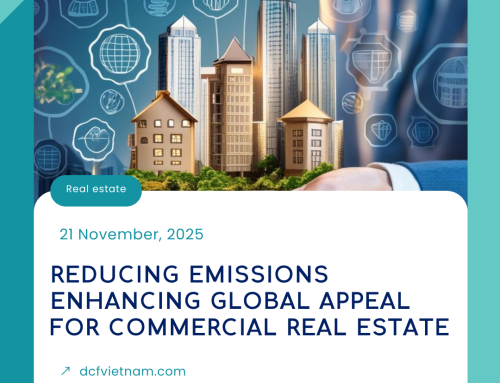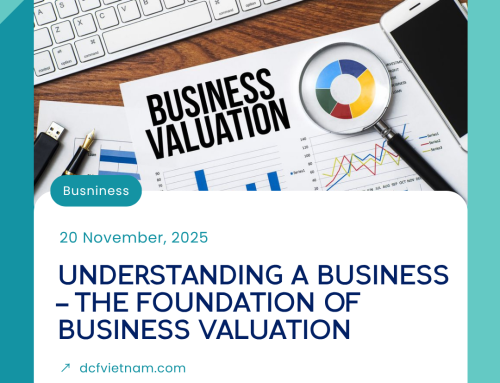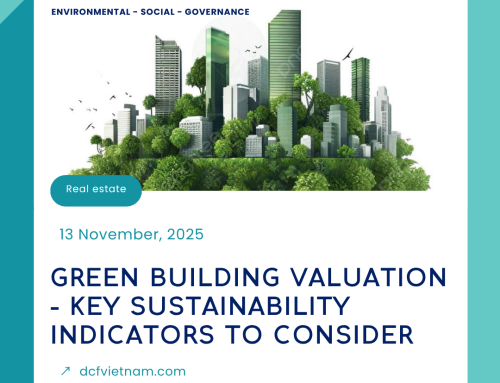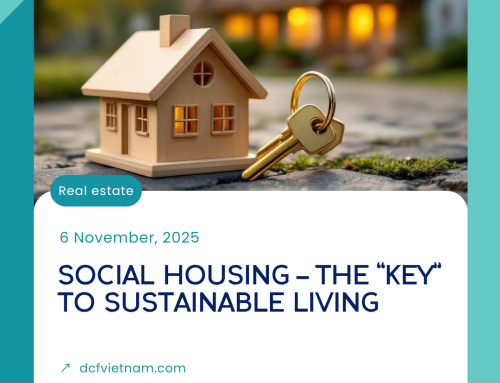Main Table of Contents
- 1. Context of Labor Structure Shift and Urgent Housing Demand
- 2. In-depth Classification of Industrial Housing (Worker vs Expert)
- 3. Legal Framework and Implementation Challenges
- 4. Dual Development Strategy and Sustainable Solutions
- 5. DCF Vietnam: Comprehensive Valuation Solutions for Industrial Real Estate
1. Context of Labor Structure Shift and Urgent Housing Demand
As Vietnam's Industrial Parks (IPs) strongly shift towards high-tech and automation production models, the demand for high-quality human resources like engineers and experts surges. The quality and scale of housing has become a pivotal factor, directly impacting the value of industrial real estate.
"An IP with modern housing not only attracts more FDI but also enhances the locality's overall competitiveness in attracting talent."
Current Situation: The Housing Gap and Fulfillment Rate
Over 80% of workers in major urban areas rely on cramped rental rooms. The total social housing demand until 2030 is approximately 2.4 million units, yet the current implementation progress only reaches approximately 5% of the target (Goal of the 1 Million Social Housing Unit Scheme).
Chart: The Gap Between Demand, Target, and Implementation Progress of Social/Worker Housing.
2. In-depth Classification of Industrial Housing (Worker vs Expert)
To meet the diverse requirements of high-tech IPs, housing must be classified into two distinct models with differing standards, amenities, and financial mechanisms.
| Classification Characteristic | Worker Housing | Expert Housing |
|---|---|---|
| Target Audience | Blue-collar workers, technical workers, recent engineering graduates, low-income. | Senior engineers, managers, foreign experts, stable/high-income. |
| Standard Unit Area | 25 m² – 35 m² (Functionally optimized, smaller than detached house standard). | Typically > 45 m² (Serviced apartments, international standard). |
| Mandatory Amenities | Basic, Integrated (Kindergarten, basic clinic, community hall). | High-end (Banks, quality schools, hospitals, 24/7 technical and cleaning services). |
| Preferred Financial Model | Subsidized Rent/Hire-purchase, 5.4%/year interest rate, Union fund support. | Long-term leases, Time-limited ownership (FIEs), Market price. |
3. Legal Framework and Implementation Challenges (Housing Law 2023 & Decree 100/2024/ND-CP)
New Mechanisms to Address Legal Bottlenecks
The introduction of the Housing Law 2023 and Decree 100/2024/ND-CP (effective from August 1, 2024) has created breakthrough mechanisms:
- Expanded Investor Scope: The Vietnam General Confederation of Labour (VGCL) is allowed to act as the social housing project investor, diversifying supply sources.
- Direct Financial Support: Subsidized loan interest rate for social housing purchase/hire-purchase at only 5.4%/year through the Vietnam Bank for Social Policies.
- Attractive Profit Mechanism: Allows social housing investors to generate profit from commercial service, trade, and commercial housing areas, accounting for a maximum of 20% of the total project area.
Practical Challenge: The Land Bottleneck
Although Decree 100 simplifies *construction/housing* procedures, the main obstacle causing project delays lies in **land issues**:
- Overlapping Land Procedures: Most delays center on land acquisition, compensation, site clearance, and land use purpose conversion, governed by the *Land Law*.
- Legal Synchronization: The practical effectiveness of Decree 100/2024/ND-CP heavily depends on the speed and synchronization of guiding documents for the Land Law 2024. If the land bottleneck is not completely resolved, the 1 million unit scheme progress will continue to be hindered.
4. Dual Development Strategy and Sustainable Solutions
For industrial real estate developers to balance their social responsibility (Social Housing - SH) and Return on Investment (ROI), adopting a **Dual Development Strategy** is the optimal solution.
Financial Balancing Mechanism and Potential Models
Dual Development: Profit Compensation
Utilize the 20% commercial area (unrestricted profit) and the Expert Housing zone to offset the development and operational costs of the SH zone (limited to 10% profit), creating financial sustainability for the entire project.
Flexible Rent-to-Own and PPP
Implement a Flexible Rent-to-Own mechanism with a subsidized 5.4% interest rate to ensure stable housing for workers. Combine with the PPP (Public-Private Partnership) model to mobilize clean land (State) and capital + management expertise (Private) to accelerate project progress.
5. DCF Vietnam: Comprehensive Valuation Solutions for Industrial Real Estate
DCF Vietnam
Ministry of Finance License No. 130/TĐG
RICS Regulated Firm (No. 791845)
With over 12 years of experience, DCF Vietnam is proud to be a pioneer in applying international standards and procedures, helping clients ensure transparency, accuracy, and legal compliance in every transaction. Our valuation results are recognized not only in Vietnam but also in global markets. We specialize in providing comprehensive valuation and consulting services, tailored to diverse business needs.
DCF Vietnam partners with enterprises and localities to create sustainable value, transforming complex housing projects into strategic assets that attract talent and accelerate the development of high-tech Industrial Parks.
REFERENCES
- Ministry of Construction. (2023). Report on the implementation of the Scheme "Investing in the construction of at least 1 million social housing units for low-income groups and industrial park workers for the period 2021-2030".
- National Assembly of Vietnam. (2023). Housing Law No. 27/2023/QH15.
- Government of Vietnam. (2024). Decree 100/2024/ND-CP detailing and guiding the implementation of a number of articles of the Housing Law. (Effective from Aug 1, 2024).
- Vietnam Real Estate Association (VNREA). (2024). Analysis of key obstacles in social housing investment procedures.
- Vietnam General Confederation of Labour. (2023). Role and mechanism for participating as investor in social housing projects for workers.
- KTG Industrial. (2025). Report on the design of ACI 117-10 high-tech factory at VSIP Bac Ninh.
DISCLAIMER
This content is the product of the author and does not reflect the views or stance of DCF Vietnam Corporation. Furthermore, this content is not intended to create a valuer-client relationship, does not constitute valuation/consultation, and does not replace professional valuation/consultation services. Actual and specific situations or assets require consultation with a professional valuer before taking any action related to the subject matter discussed herein.





